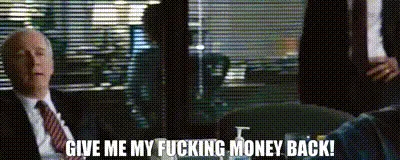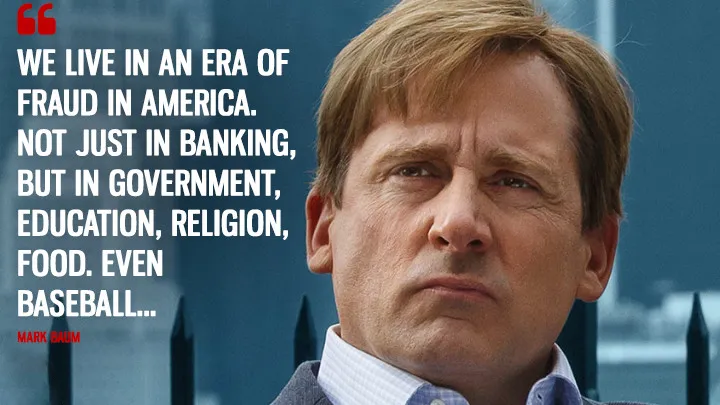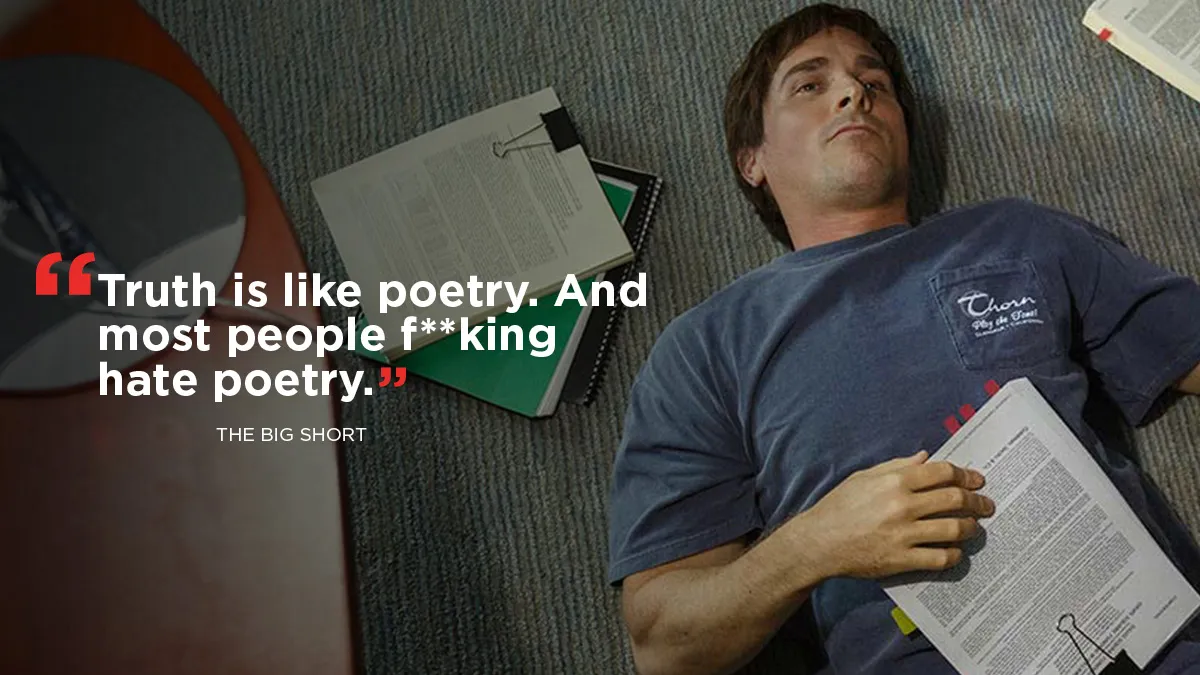“The Big Short” (2015) is a film based on the true story of a group of investors who made a fortune by betting against the housing market prior to the 2008 financial crisis. While the film is set in the traditional finance world, we can draw several lessons that apply to the crypto industry.

Let’s have a quick recap of the main characters.
Michael Burry is one of The Big Short’s main characters. As an introverted person, he likes numbers and often spends days deep diving into datasets to spot patterns. After having doubts about the quality of the mortgage market, he spends weeks researching on the quality of the thousands of mortgages making up MBS (Mortgage-Backed Securities) to spot early signs of default.
The FrontPoint Partners team is also one of the main characters in the movie. After getting a misdialed call informing them about credit default swaps on mortgage bonds, their interest is picked up. However, the bet looks so crazy and contrarian that they want to conduct their own research. They thus travel to Miami, where they survey homeowners about their mortgage payments and find out most of them are in default.
The movie gives us five main lessons:
- Lesson 1: Do Your Own Research.
- Lesson 2: Don’t trust, verify.
- Lesson 3: Stop underestimating risks and overestimating rewards.
- Lesson 4: Diversify.
- Lesson 5: Don’t be afraid to be contrarian.
Lesson 1: Conduct extensive research. Always deep dive into the documentation of a project yourself before investing a substantial amount
It’s key to grasp the underlying fundamentals of an investment, rather than just following hype or speculation. The Big Short’s main characters conduct extensive research and analysis to identify the flaws in the housing market and the potential for a collapse.
In the film, Michael Burry asks a new hire to find out exactly what mortgages are in each of the top 20 mortgage bonds. The hire is shocked, as he knows a mortgage bond is made up of thousands of mortgages. However, it is precisely this kind of deep research that allowed Burry to spot the immense fragility of American mortgage bonds and the implication for the wider financial markets.
Lesson 2: Don’t trust, verify. Try to rely as much as possible on verifiable data when investing in a project (e.g., on-chain data, smart contracts, etc.).
Third parties (rating agencies, data aggregators, analysts/ researchers) can be a good way to understand the risk profile of an asset but may be subject to different kinds of bias. So, it’s always better to verify the information they give you!
Later in the movie, FrontPoint Partners meets with a manager at Standards and Poors. Their goal is to understand why credit rating agencies have not been downgrading CDOs as mortgage defaults skyrocket. They discover that S&P provided AAA ratings despite the junk nature of the CDOs to keep a good business relationship with the banks and prevent them from switching to their competitor Moody’s.
Lesson 3: People underestimate risk and overestimate reward. Think about stress scenarios (like Terra/Luna which broke the peg under some stressed market conditions).
Think about lotteries and casinos: they’ll make you take a risk for a negative expected reward, yet people only see the upside and still pay for casinos and lottery tickets.
In the film, the young investors at BrownField capital turned $110k in $30 million in 4 years taking bets on the principle that “people hate to think about bad things happening, so they always underestimate their likelihood”.
Another scene from the movie shows Mark Baum meeting with a stripper in Florida. The young woman brags about her multiple adjustable-rate mortgages which enabled her to buy five houses and a condo. She avoids paying excessive monthly payments by refinancing with lower interest rates as her property prices go up. Mark tells her that as soon as real estate prices stop going up, she won’t be able to refinance and her monthly payments will then rise by 200–300%, which will cause her to default.

Lesson 4: Diversify. Never put all your eggs in the same basket: different tokens, different wallets, different CEX (if using any), and different underlying markets.
You should never bet a large portion of your wealth on a single investment. In the crypto world, it is also essential to diversify your investments across different coins and projects to mitigate the potential impact of any one investment going sour. It’s also essential to keep a sizable portion of your net worth outside of the crypto market.
The main characters in the film took massive bets with no clear exit plan. They all experience massive levels of stress as the CDOs and mortgage bonds’ prices keep rising despite early signs of a market crash.

Lesson 5: Don’t be afraid to be contrarian. Especially during bull runs, try to understand the real value created by a project to see if it’s a disguised Ponzi or not.
Question conventional wisdom, and be willing to go against the crowd. This is what distinguishes highly successful investors from the masses.
In the film, Mark Baum is a character that likes to question everything and everyone, making tons of enemies in the process. This contrarian bias enables him to take action when hearing about market players who shorted the housing market, as opposed to most other Wall Street institutions who considered it as madness.

All in all, the Big Short is a legendary finance movie that is not only entertaining but also full of golden advice for any investor in stocks or crypto. There are too many out there blindly aping into protocols without any framework to pocket gains or limit losses. By consistently following those basic rules, you will definitely get better than 90% of investors in web3:
- Lesson 1: Do Your Own Research
- Lesson 2: Don’t trust, verify.
- Lesson 3: People underestimate risk and overestimate reward.
- Lesson 4: Diversify.
- Lesson 5: Don’t be afraid to be contrarian.


